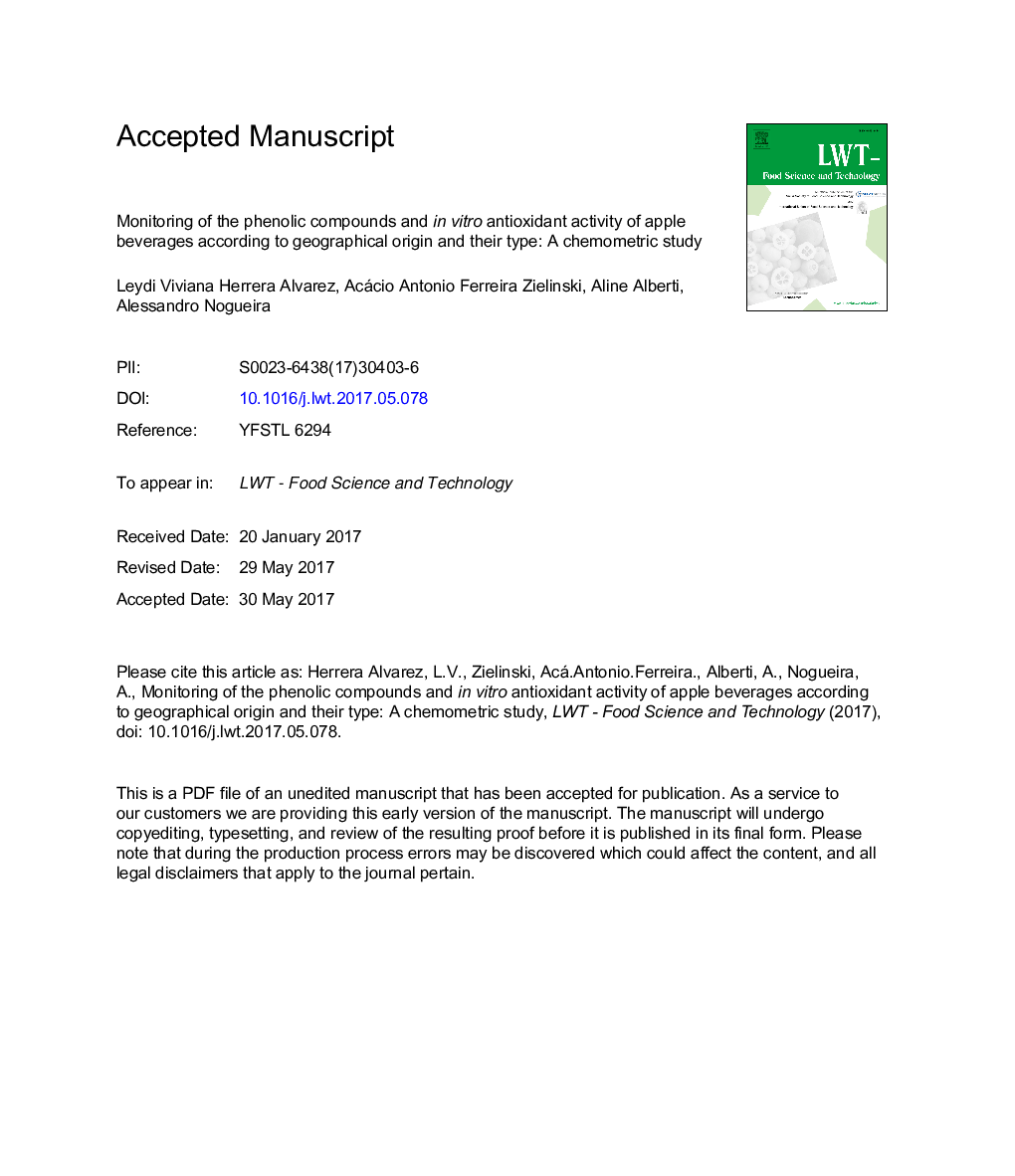| Article ID | Journal | Published Year | Pages | File Type |
|---|---|---|---|---|
| 5768955 | LWT - Food Science and Technology | 2017 | 33 Pages |
Abstract
Apple juices (n = 48) were analyzed and classified according to their phenolic composition and in vitro antioxidant activity (DPPH, ABTS, and FRAP), as well as their relationship to their geographical origin and type of juice using a chemometric approach. Total phenolics ranged from 114 to 485 mg CQAE/L and the in vitro antioxidant activity varied from 324 to 9556 μmol TE/L. Significant correlations coefficients (r â¥Â 0.32, p < 0.05) were displayed between antioxidant activity and total phenolic compounds and flavonoids. Furthermore, chlorogenic acid and phloridzin also showed correlations with antioxidant activity (r ⥠0.58 and r = 0.31, respectively). Principal component analysis (PCA) showed an overlap between the samples; and it was not effective enough to distinguish the geographical origin and type of juice. Using hierarchical cluster analysis (HCA) four clusters was suggested, in which cluster 1 showed the highest levels of antioxidant activity (DPPH, ABTS, and FRAP). The SIMCA model was the best of all the developed supervised models at predicting the geographical origin and type of juice, with an average percentage of correct classification that was higher that 80%.
Related Topics
Life Sciences
Agricultural and Biological Sciences
Food Science
Authors
Leydi Viviana Herrera Alvarez, Acácio Antonio Ferreira Zielinski, Aline Alberti, Alessandro Nogueira,
